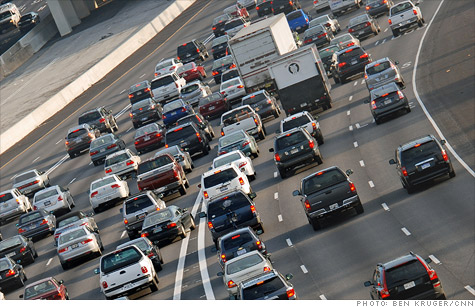Search News

Electronic vehicle-to-vehicle communication technology could eliminate or reduce most crashes, Consumer Reports says.
NEW YORK (CNNMoney) -- Consumer Reports magazine announced its support Tuesday for so-called vehicle-to-vehicle technology, which will allow autos to communicate with each other electronically -- and potentially save thousands of lives.
Vehicle-to-vehicle communication, or V2V for short, allows cars and trucks to communicate with other vehicles in a given area. Each vehicle broadcasts its own speed and direction, making it easier to avoid potential collisions.
A vehicle could even send out an alert as its wheels begin to skid, alerting vehicles behind it to a slippery surface ahead.
V2V is often discussed as a potential component of future "driverless cars," but it can also be helpful in human-driven cars, providing an adjunct to a driver's own eyes and ears. In some situations, the data could be used to automatically take action, such as braking, if a driver fails to heed a warning.
The technology has been under development by major automakers for years. The Department of Transportation's National Highway Traffic Safety Administration is expected to rule next year on moving forward with research into the technology.
V2V technology could help drivers avoid or minimize about 80% of crashes involving sober drivers, according to NHTSA.
The systems can also be used to communicate, not just with other cars, but with things such as street signals and signs. That could allow cars, theoritically, to react automatically to red lights or school zones, or at least to alert drivers.
The devices used for this technology can be small, about the size of a cigarette pack. Older cars could be easily retrofitted with V2V devices, said Nady Boules, director of electronics and controls for General Motors (GM, Fortune 500).
In the future, the technology could even be incorporated into cell phones, said Boules. That would allow pedestrians to carry devices that could warn car and trucks as they step into the street.
While a V2V system's effectiveness would increase with the number of equipped vehicles, it could be helpful even with relatively few equipped vehicles, Consumer Reports said.
Addressing privacy concerns will be important, however, the magazine said.
"Adequate oversight of how the information is used is essential to ensure the privacy of drivers and to prevent abuse," said Rik Paul, automotive editor of Consumer Reports. ![]()